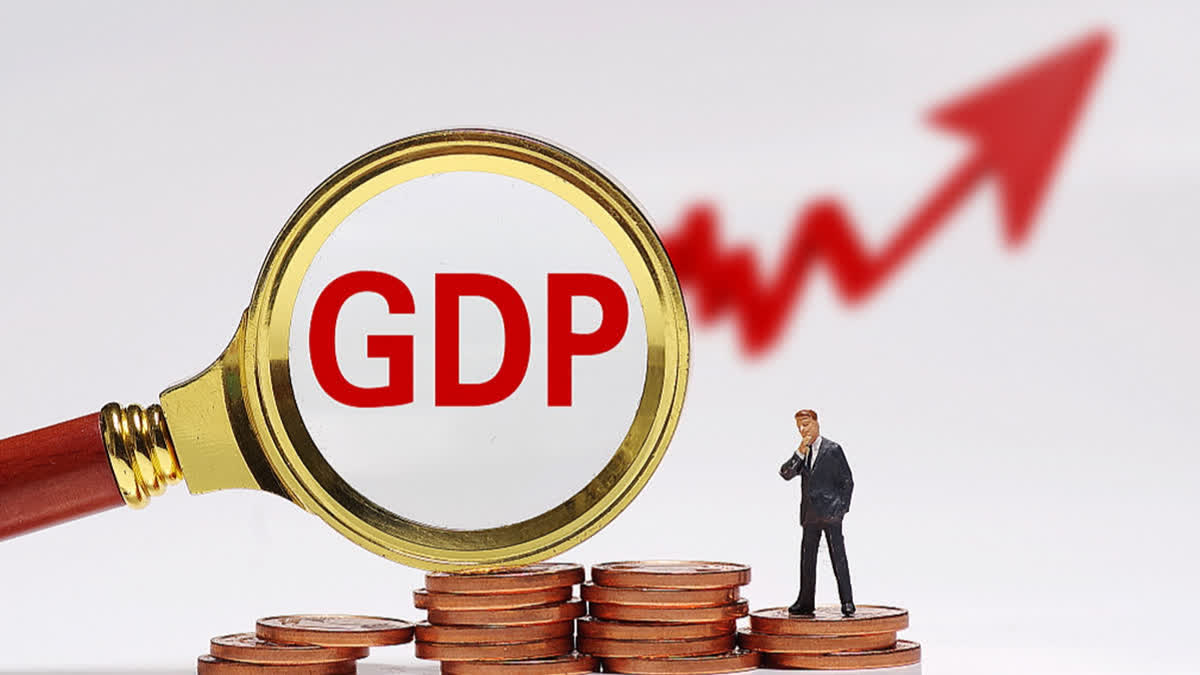New Delhi: Despite a challenging global environment caused by the Russia-Ukraine war and recessionary pressures caused by extremely tight monetary policy in advanced economies such as the USA and European countries followed by their central banks to control run-away inflation, the Indian economy is expected to surpass the earlier forecasts and set to grow at above 8 per cent in the first quarter of the current financial year, showed analysis by the SBI Research team.
European and American Central Banks have tightened monetary policy to battle sky-high inflation in countries such as the USA and UK, important trading partners of India which not only led to the spectre of a global recession but it has also affected economies of developing economies such as India and China.
That is why the International Monetary Fund (IMF) has cut the global GDP growth forecast in its latest report from an earlier projection of 3.5 per cent to 3 per cent both for the current year and the next year. However, an analysis of 30 high-frequency data sets by the State Bank of India’s economic research team showed the resilience of the Indian economy which is set to emerge as a bright spot among all the major economies including China.
In the first three months of the current financial year, the April-June 2023 period, economic activity remained resilient in the first quarter of FY 2023-24, mainly due to the solid performance of the services sector, the biggest contributor to India’s economy.
A report by State Bank of India’s Group Chief Economic Adviser Soumya Kanti Ghosh noted that it was in sharp contrast to IMF’s latest forecast estimating global growth to fall from 3.5% in CY22 to 3% each in CY23 and CY24 with rapid rate hikes by central banks to fight sticky inflationary trends weighing on economic activity.
Talking about the global economy, Ghosh said non-services sectors, including manufacturing, have shown weakness, and high-frequency indicators for the Q1FY24 point to a broader slowdown in activity. Moreover, the gross fixed capital formation (GFCF) and industrial production have slowed sharply or contracted in major advanced economies, dragging international trade and manufacturing in emerging markets as a corollary.
As a result, the balance of risks to global growth remains tilted to the downside as extreme climatic events and enhanced geopolitical tension further increase the risk of a global slowdown.
India, a bright spot
Despite global challenges such as the Russia-Ukraine war, extreme climatic conditions caused by the El-Nino and a slowdown in major trading partners of India, the IMF has projected India’s growth at 6.1 per cent in 2023. It is an increase of 20 basis points compared with the IMF’s April projection which is mainly due to stronger-than-expected growth in the fourth quarter of 2022 as a result of stronger domestic investment.
The momentum gathered by the country’s economy in the last three months of the previous financial year (April 2022-March 2023 period) appears to have sustained itself in the first quarter of the current financial year as well. It reflects in the manufacturing sector as shown in better factory output data measured as the Index of Industrial Production (IIP).
The improved performance of the manufacturing sector is also reflected in improved automobile sales and purchasing managers’ index (PMI) data. Moreover, agriculture sales have been strong and the power supply has been high.
Services Sector
The services sector, which does not include any production and sale of goods, has been the biggest contributor to India’s economic growth story. For example, in the services sector, passenger traffic picked up in the fourth quarter of the last financial year and it maintained its momentum in the first quarter of the current financial year while air cargo traffic also registered an increase during this period.
SBI’s Composite Leading Indicator
The SBI composite leading indicator (CLI) Index (a basket of 43 leading indicators which includes parameters from almost all the sectors) based on monthly data shows continued positive economic activity in the first quarter of this fiscal in comparison with the last quarter of the previous financial year.
GDP growth to exceed RBI’s projection: SBI Research
India’s Central Bank, the Reserve Bank of India has estimated the first quarter’s real GDP growth at 7.8 per cent and for the full fiscal it has been pegged by the RBI at 6.5 per cent. However, SBI Research Team, which has developed its own Artificial Neural Network (ANN) model with 30 high-frequency indicators has come up with better growth than RBI’s projections.
SBI Research’s Artificial Neural Network has been trained for the quarterly GDP data from 2011-Q4 to 2020-Q4. According to Ghosh, the in-sample forecast performance of the model in the training period has been precise. “Out of Sample Forecast Performance, of the last four quarters have been precise. On the basis of the ANN model, we forecast that the quarterly GDP growth for the Q1FY24 would be at 8.3 per cent,” Ghosh said in a statement sent to ETV Bharat.
Ghosh noted that given the GDP deflator at -0.6 per cent (due to negative WPI), he expects nominal GDP growth at 7.7-7.8 per cent for Q1 FY24. This is the first time since the fourth quarter of FY 2018-19, that nominal GDP growth is expected to be less than the real GDP growth.
Huge surge in capital expenditure
Most importantly, there has been a surge in capital expenditure in the first quarter, with the Central government spending 27.8 per cent of budgeted expenditure, while states are at 12.7 per cent of budgeted expenditure. States such as Andhra Pradesh, Telangana, and Madhya Pradesh where elections are due have registered capital expenditure growth up to 41 per cent.
A high GDP growth will make it easier for the Reserve Bank to follow a balanced monetary policy that will support growth while keeping inflation under some control as it is legally mandated to keep the retail inflation under the band set by the Central Government under Section 45ZA of the RBI Act of 1934.



